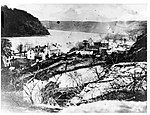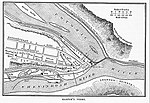Storer College

Storer College was a historically black college in Harpers Ferry, West Virginia, that operated from 1867 to 1955. A national icon for Black Americans, in the town where the 'end of American slavery began', as Frederick Douglass famously put it, it was a unique institution whose focus changed several times. There is no one category of college into which it fits neatly. Sometimes white students studied alongside Black students, which at the time was prohibited by law at state-supported schools in West Virginia and the other Southern states, and sometimes in the North. In the twentieth century, Storer was at the center of the growing protest movement against Jim Crow treatment that would lead to the NAACP and the Civil Rights Movement. The first American meeting of the predecessor of the NAACP, the Niagara Movement, was held at Storer in 1906. John Brown's Fort, a symbol of the end of slavery in the United States, was located from 1909 until 1968 on the Storer campus, where it was used as the college museum. The Storer campus is now part of Harpers Ferry National Historical Park.
Excerpt from the Wikipedia article Storer College (License: CC BY-SA 3.0, Authors, Images).Storer College
Fillmore Street,
Geographical coordinates (GPS) Address Nearby Places Show on map
Geographical coordinates (GPS)
| Latitude | Longitude |
|---|---|
| N 39.323788888889 ° | E -77.735413888889 ° |
Address
Fillmore Street 313
25425
West Virginia, United States
Open on Google Maps










